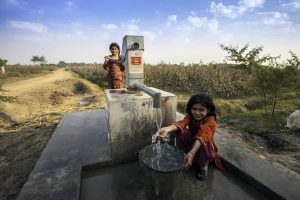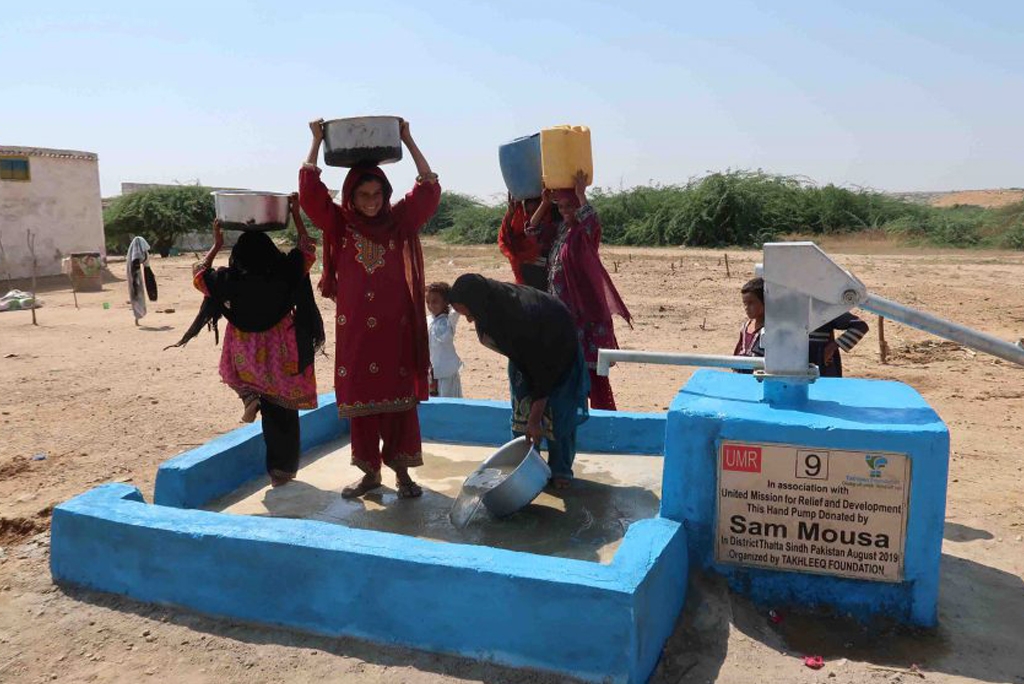Water Crisis and Inequalities in Pakistan
- There is an access of 91% to improved water sources in Pakistan. But 88% of the water supplied is unsafe.
- Pakistan is running out of fresh water at a high rate. It’s anticipated that it is likely to suffer a shortage of 31 million acre-feet of water by 2025.
The shortfall will be devastating for a country with an agriculture-bas
Water Utilization and Agriculture
Approximately 95 % of fresh water is utilized for irrigation. Yet the country is achieving a lower per-acre crop production. In addition, nearly 70% of Pakistan’s population is directly or indirectly associated with agriculture. This accounts for 26 percent of its gross domestic product (GDP).

UMR’s funded project has delivered 93 modified shallow wells, open surface wells, and shallow wells to approximately 393,000 rural beneficiaries. More than 10,000 Women, Children and Elders Accessed to the Cleanby Construction of Pakistan Water Wells Sanitation and Hygiene Program.
Below are most common examples of beneficiary feedback, indicative of general living conditions of the recipient population:
1. Hardships of in Getting Clean Drinking Water (Heat + Long Distance)
Sanitation Challenges and Population Growth
- The majority of the 25 million people not using a toilet live in poor rural households or insecure urban informal settlements. This makes them the most difficult to reach.
- Exponential population growth in Pakistan has also dramatically changed the calculus of water demand. It results in reduced water availability per capita.
- The shortage of access to clean drinking water is becoming a grave concern in Pakistan. Because many health problems are caused by water.
UMR’s Efforts to Address Water Inequity
UMR (organization name) has implemented projects to address water inequity in rural areas.
Approximately 393,000 beneficiaries have received –
- Modified shallow wells,
- Open surface wells, and
- Shallow wells.
Through these initiatives, over 10,000 women, children, and elders have gained access to clean water Pakistan Water Wells
Beneficiary Feedback
Below are the most common examples of beneficiary feedback, indicative of the general living conditions of the recipient population:
Hardships of Getting Clean Drinking Water (Heat + Long Distance)
Context: Tando Muhammad Khan District is a district in the southern part of Sindh province in Pakistan. Summers are the hottest in Tando Muhammad Khan. Due to climatic change, there have been droughts in Tando Muhammad Khan due to which day-to-day activities have become unattainable. The poor community of TM KHAN had already submitted applications to Muslim Aid Pakistan Field Office for providing safe drinking water.
The humanitarian team constituted a committee for conducting the survey to confirm the place and community concerns for which the applications are received. Muslim Aid Pakistan Humanitarian team scrutinized the applications and gave priority to the most deserving ones. After the survey, we hired a vendor along with laborers and a digging machine. We monitored and evaluated the work regularly until completion.
Testimony: The resident of Tando Muhammad Khan expressed with gratitude that providing clean drinking water to the poor community is really praiseworthy service. He also added that before the execution of this well the people were facing many hardships in getting clean drinking water by walking miles away and also there had been many problems.














